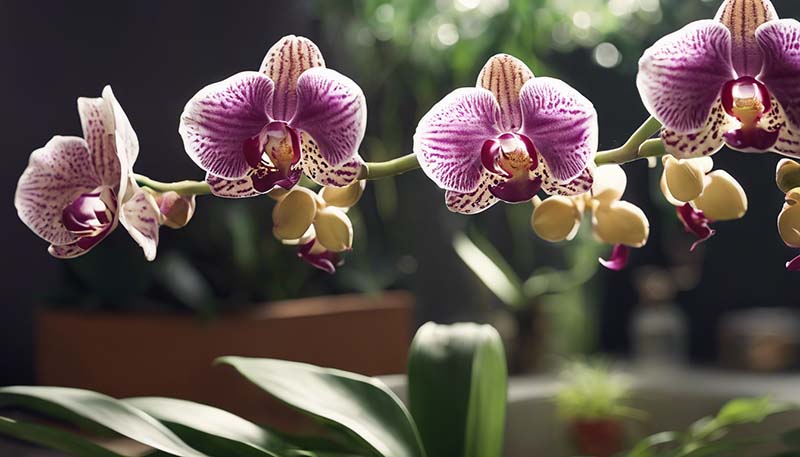Indoor Gardening: How to Grow Orchids Indoors
Orchids are one of the most rewarding and beautiful flowers to grow indoors. They are often considered difficult to grow, but with the right care and attention, they can thrive in an indoor environment.
Table of Contents
- Introduction
- Types of Orchids
- Light Requirements
- Watering Tips
- Temperature and Humidity
- Fertilizer and Feeding
- Repotting Orchids
- Common Problems and Solutions
- Conclusion
Introduction
Orchids are a diverse and beautiful family of flowering plants. They come in a wide range of colors, shapes, and sizes, and are known for their long-lasting blooms. Despite their reputation for being difficult to grow, with the right care, they can be a stunning addition to any indoor garden.
Types of Orchids
There are over 25,000 species of orchids, each with their own unique characteristics and care requirements. Some popular types for indoor growing include Phalaenopsis, Cattleya, Dendrobium, and Cymbidium. Each type has its own specific needs, so it's important to research the type of orchid you choose to grow.
Advertisement
Light Requirements
Orchids need plenty of light to grow and bloom. However, they should be protected from direct sunlight as it can burn their leaves. A good rule of thumb is to place your orchid near a window with filtered light, or in a room with bright, indirect light.
Watering Tips
Orchids should be watered thoroughly, but infrequently. Allow the potting mix to dry out slightly between waterings. Overwatering can lead to root rot and other diseases.
Temperature and Humidity
Orchids prefer a warm and humid environment. The ideal temperature range for most orchids is between 60-75°F during the day and 55-65°F at night. Humidity should be kept between 40-70%. You can increase humidity by placing the orchid on a tray of water with pebbles, or by using a humidifier.
Fertilizer and Feeding
Orchids need regular feeding to grow and bloom. Use a balanced, water-soluble fertilizer every two weeks during the growing season, and reduce to once a month during the winter.
Repotting Orchids
Orchids should be repotted every 1-2 years. Use a well-draining potting mix designed for orchids. Be careful not to damage the roots when repotting.
Common Problems and Solutions
Common problems with orchids include yellow leaves, wilting, and failure to bloom. These can often be solved by adjusting light, temperature, and watering conditions. Pests such as mealybugs and spider mites can also be a problem, and should be treated promptly.

Conclusion
Growing orchids indoors can be a rewarding and beautiful hobby. With the right care and attention, you can enjoy the stunning blooms of these exotic flowers in your own home. Remember to research the specific needs of your orchid, and adjust your care routine as needed.
Happy gardening!
Comment